Every project manager needs to ensure their team’s available capacity aligns with the business demand.
Effective capacity planning can help you balance this supply-and-demand relationship and ensure team members work to the best of their ability without experiencing burnout.
This is where capacity planning software comes in.
A good tool can help you accurately forecast demand and ensure you have the right resources to meet that demand.
In this article, we’ll explore the top 10 capacity planning software solutions available in the market today. We’ll also look at three key features that your chosen capacity planning tool must have so you can meet your business goals.
Table of Contents
- The 10 best capacity planning software for your business
- How to choose a capacity management software solution?
The 10 best capacity planning software for your business
Capacity planning, or demand forecasting, is the process of determining your capacity requirements for both the short and long term. It also includes figuring out whether you have the resources or current capacity to deal with current or future forecasted demand.
A capacity planning tool is the best way to do this.
You can use the capacity planning tools mentioned in this article to:
- Conduct a demand forecast.
- Determine the required capacity.
- Calculate resource capacity.
- Measure the gap between resource demand and resource capacity.
- Align capacity with demand.
1. Time Doctor
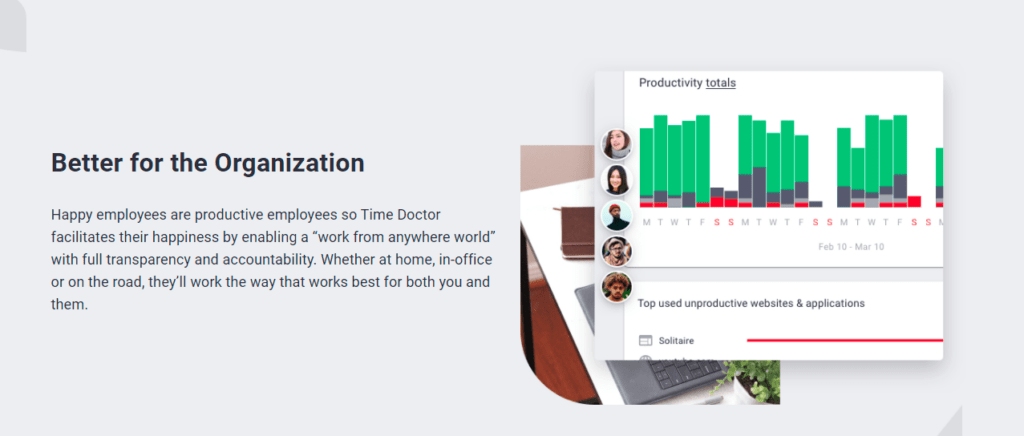
Time Doctor is a powerful time tracking and capacity utilization tool that’s trusted by large businesses such as Ericsson as well as small businesses such as Thrive Market.
It’s one of the best time tracking software as it provides many time management features and functionalities for remote and in-office teams of all sizes.
Time Doctor offers integrations with over 60 apps and is available across macOS, Microsoft Windows, and Linux operating systems. It also features an Android mobile app.
Key features
Here are just a few of Time Doctor’s features that can help you with resource capacity planning and utilization.
A) Time tracking
Time Doctor offers users two methods of tracking their work time – manual/interactive and automatic/silent. Both require users to download the desktop app.
In the manual or interactive mode, users simply have to enter a project name and click on the ‘Start’ button to track time. When they want to stop or take a break, they can simply press the ‘Stop’ button.
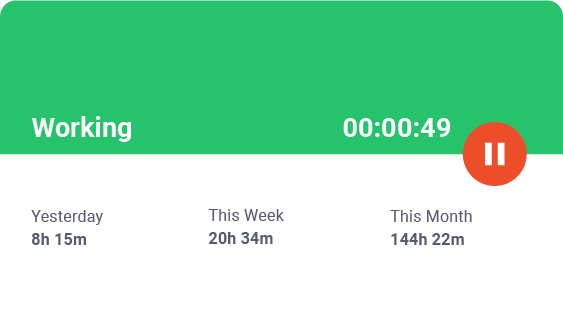
In the automatic or silent mode, the app starts as soon as your team member starts their computer and runs silently in the background without interfering with their work.
B) Idle time tracking
If a team member has been idle for too long, Time Doctor will send them a pop-up notification gently nudging them to get back to work. They can take this opportunity to take a break as well.
If employees want to continue working, they simply have to press a keyboard key or the mouse to indicate they’re still working.
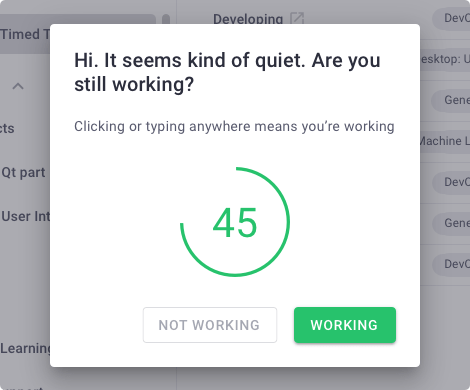
Note: Time Doctor isn’t a keylogger; it simply records if a key has been pressed.
C) Work schedules
Time Doctor’s work scheduling feature allows you to create employee schedules and track how much time they spent working during each shift.
This way, you get a snapshot of all their tracked hours in one easy timeline view.
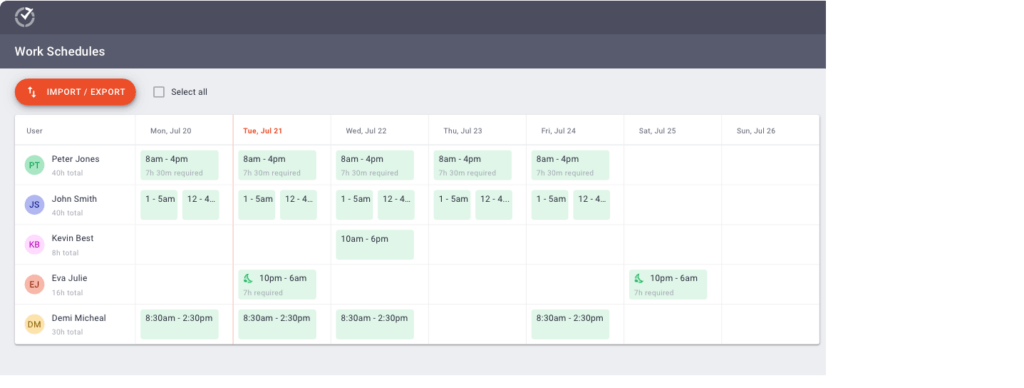
D) Project and task management
Depending on each employee’s available capacity, you can assign them projects and tasks through Time Doctor itself.
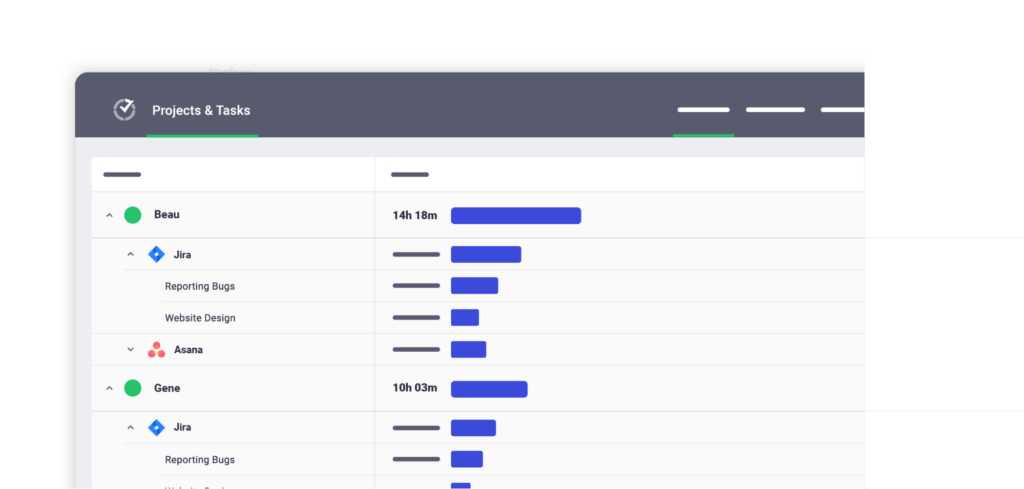
This will help streamline any workflow bottleneck issues your team may be experiencing and ensure no one is overworking or burnt out.
E) Real-time productivity reports
Time Doctors offers managers multiple productivity reports so you know how and where your team can improve. Some of these reports are:
- Activity summary report: Displays an employee’s active, unproductive, manual, and mobile time for a selected time range.
- Timeline report: Shows you the time an employee spends working and taking breaks.
- Hours tracked report: Lets you view your team’s timesheet data during a specific date range.
- Projects & tasks report: Shows how an employee spends on different tasks and projects.
- Web & app usage report: Lists the sites and applications employees use during work hours, and the time they spend on each of them.
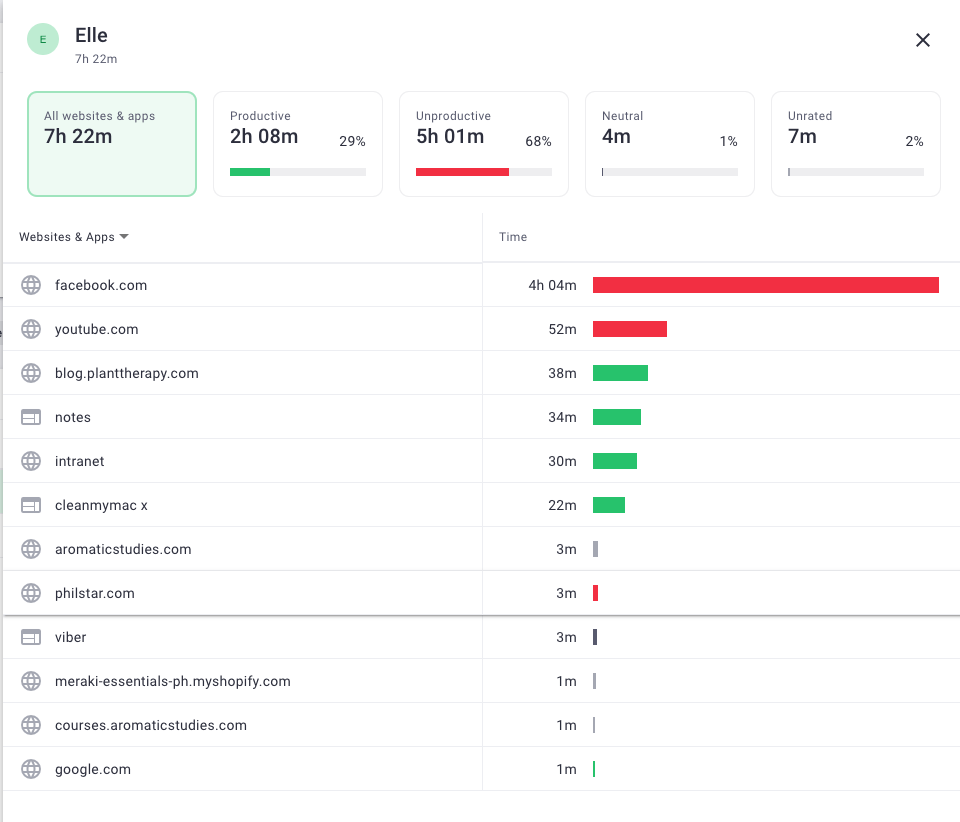
F) Robust Chrome extension
Time Doctor offers a robust Chrome browser extension that further integrates with over 60 tools.
Using the extension, team members can track time spent on any site or app through their browser itself.
Pricing
Time Doctor offers a free 14-day trial of all its features with no credit card details required, while paid plans start at $7/user per month.
Customer ratings
- G2: 4.4/5 (270+ reviews)
- Capterra: 4.5/5 (400+ reviews)
2. Asana
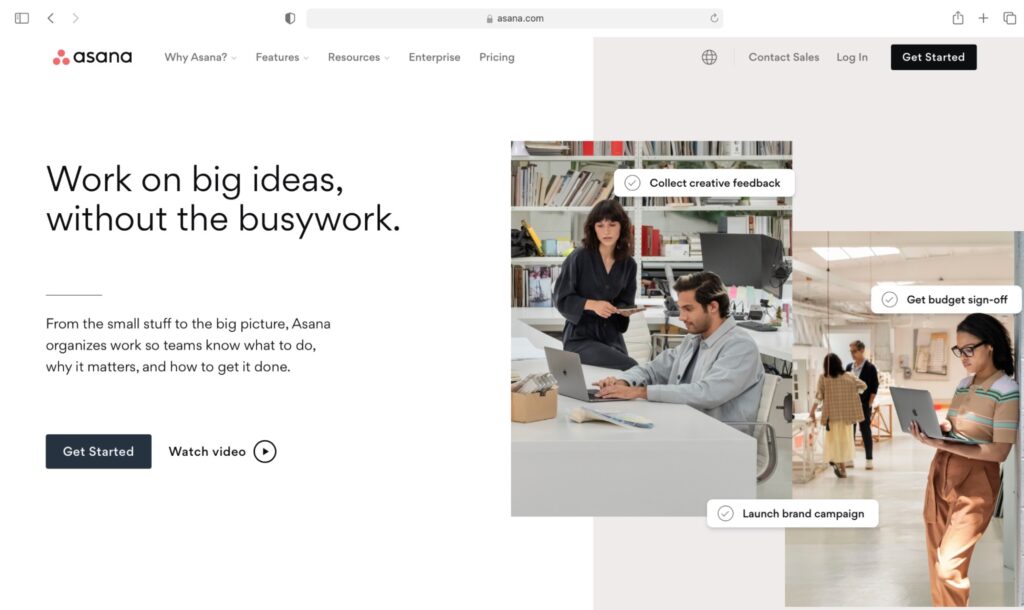
Asana is a work management platform designed to help teams organize, track, and manage their work.
Key features
- Visualize your project through a list, timeline, or board view.
- Specify the due date and time for each sub-task to avoid delays.
- Add task dependencies to make it clear which tasks are ready to start.
- Use an open text editor to write briefs in Asana.
Pricing
Asana offers a free version of its software tool for small teams, while paid plans begin at $13.49/user per month.
These paid plans offer a timeline view and allow you to track project progress across unlimited projects.
Customer ratings
- G2: 4.3/5 (8,200+ reviews)
- Capterra: 4.5/5 (10,700+ reviews)
3. ClickUp
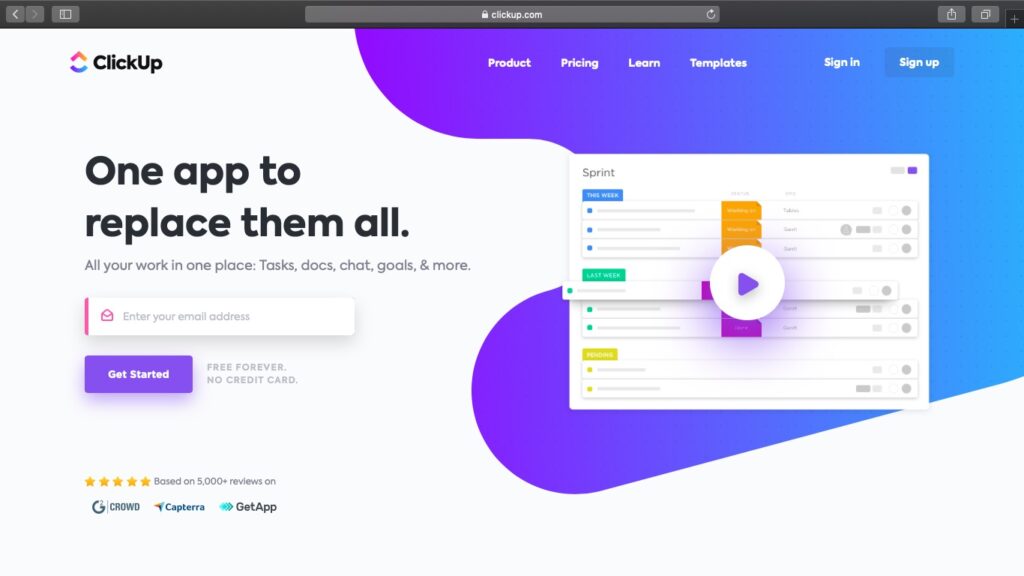
ClickUp is a customizable work productivity platform that can help increase the efficiency of teams across an organization.
Key features
- Create checklists within tasks to track multi-step workflows.
- Streamline teamwork and file sharing with powerful collaboration features.
- Set goals, track progress, and manage resources effectively through productivity reports.
- Add time estimates to tasks for better resource utilization.
Pricing
ClickUp offers a free version of its tool.
For extra features, you may want to go for a paid plan starting at $9/user per month with features such as unlimited dashboards, Gantt charts, and custom fields.
Customer ratings
- G2: 4.7/5 (4,200+ reviews)
- Capterra: 4.7/5 (2,700+ reviews)
4. DELMIAWorks Manufacturing ERP (formerly IQMS)
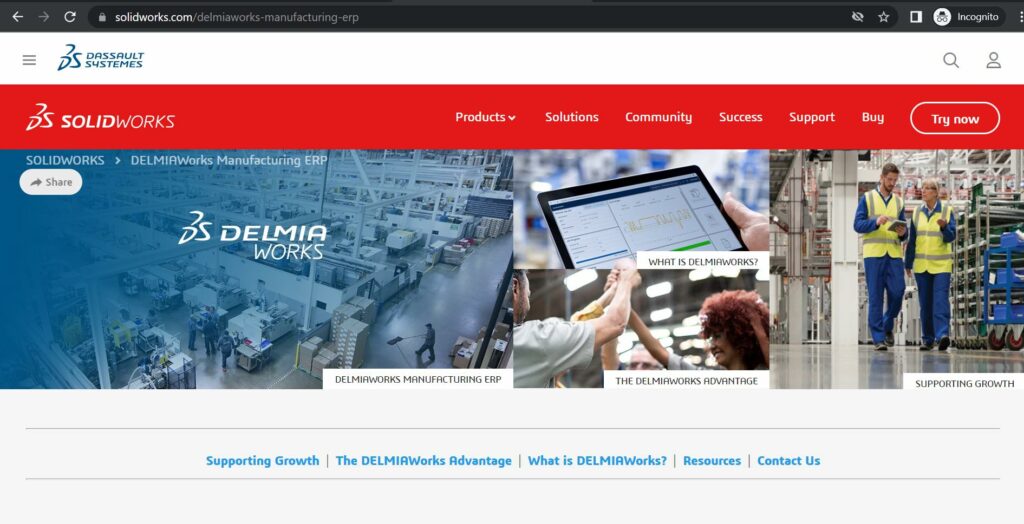
DELMIAWorks Manufacturing ERP system is an Enterprise Resource Planning system that helps mid-market manufacturers increase efficiency and visibility on the shop floor.
Key features
- Improve efficiencies by automating order processing and procurement.
- Receive real-time supply chain planning and manufacturing processes insights for inventory optimization.
- Streamline processes across the production line for operational excellence.
- Gain end-to-end visibility and control over your on-premises locations.
Pricing
Available upon request.
Customer ratings
- G2: 4.1/5 (30+ reviews)
- Capterra: 4.1/5 (280+ reviews)
5. Float
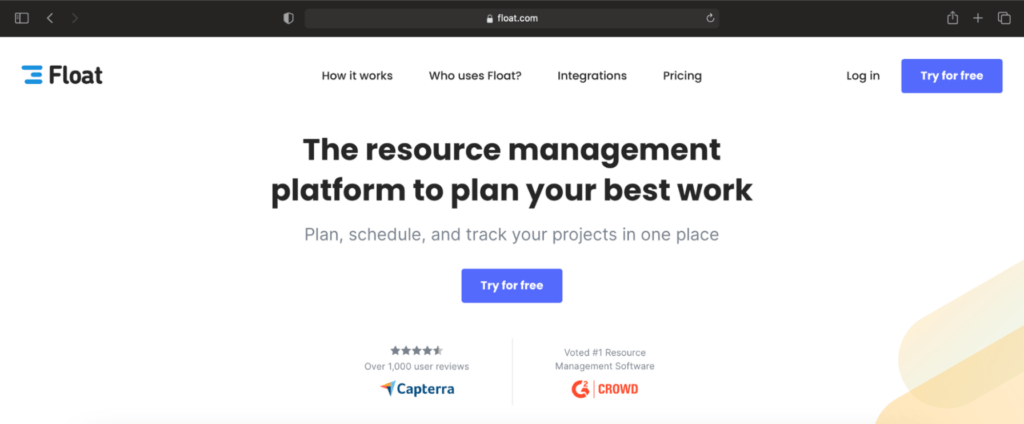
Float is a resource management platform that helps you plan, schedule, and track all your team projects throughout their lifecycle.
Key features
- Set a budget to forecast your resource capacity and strategically plan project work.
- Add project phases and set milestones with just one click.
- Monitor project progress in real-time and compares hours taken with estimated projections.
- Schedule time off, set custom holidays, and import public holidays with the calendar integration.
Pricing
Float offers a 30-day free trial of its features, including resource planning, capacity reporting, and resource scheduling. After this, paid plans start at $7.50/user per month.
Customer ratings
- G2: 4.2/5 (850+ reviews)
- Capterra: 4.5/5 (1,100+ reviews)
6. Forecast
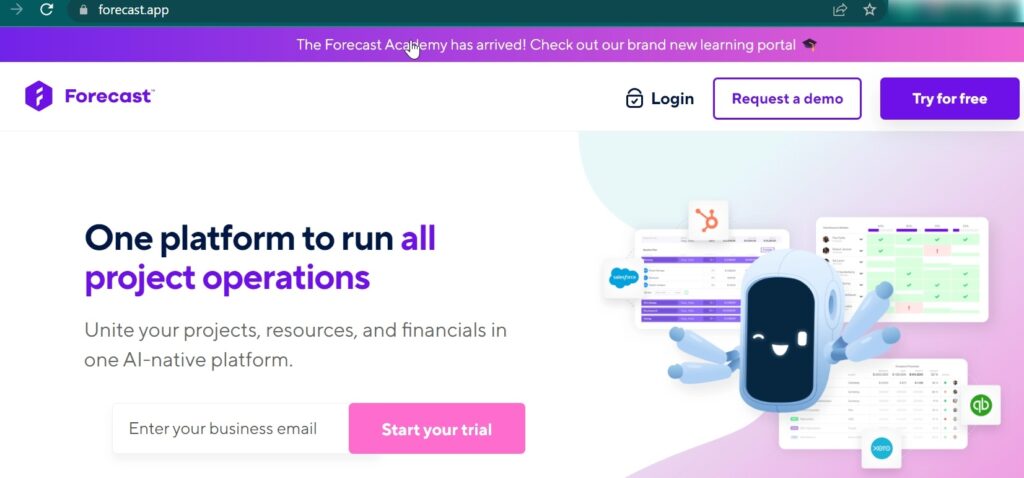
Forecast is a resource and task management solution that allows you to quit juggling different spreadsheets in favor of an all-in-one platform.
Key features
- Automate project planning to get your tasks up and running faster.
- Follow project progress to the minute and stay ahead of any potential problems.
- Make intelligence resource allocation decisions to balance your team’s workload.
- Get a complete picture of revenue, cost, and profit of each project generated automatically, based on planned and actual work.
Pricing
Forecast offers a free trial when you sign up, after which, paid plans start at $29/user per month.
These plans include features such as AI work automation, resource management, capacity planning, project management, custom permissions, online time tracking, and an open developer API.
Customer ratings
- G2: 4.2/5 (60+ reviews)
- Capterra: 4.5/5 (50+ reviews)
7. Mavenlink
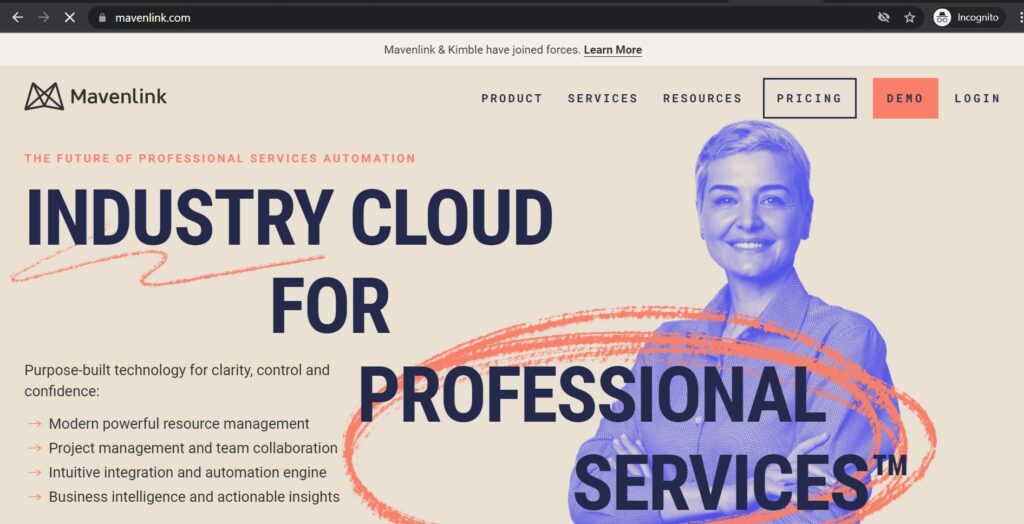
Mavenlink is a project and resource management software solution helping you make the most of your available resources across all tasks and projects.
Key features
- Draw data and manage resources in real-time for faster decision-making.
- Increase your resource utilization effectiveness with powerful planning capabilities.
- Analyze your workforce for assigning tasks per your team’s skillsets.
- Build workflows that establish consistency, reliability, and reduce delays.
Pricing
Available upon request.
Customer ratings
- G2: 4.1/5 (690+ reviews)
- Capterra: 4.2/5 (560+ reviews)
8. Resource Guru
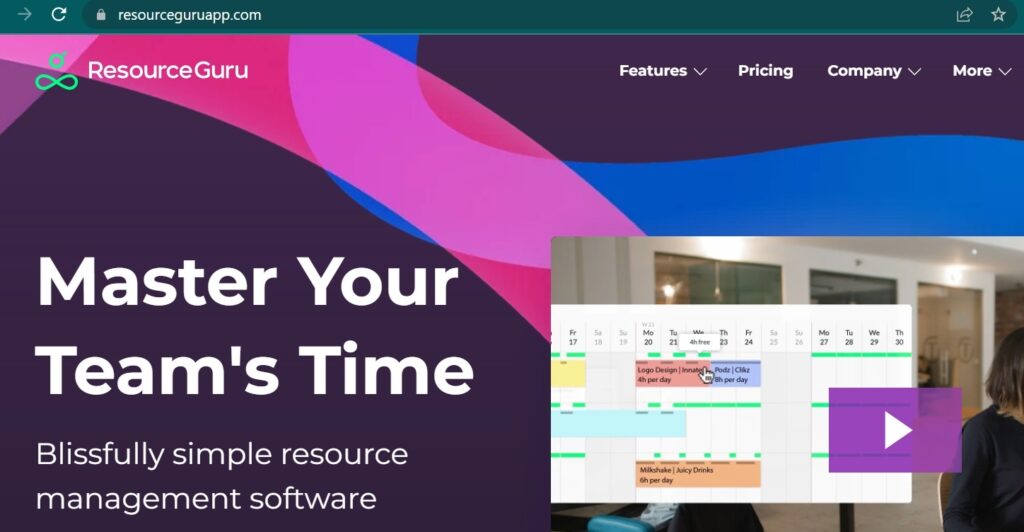
Resource Guru is a resource management, planning, and scheduling tool that allows you to utilize your existing capacity to improve your overall efficiency and productivity.
Key features
- Get a bird’s eye view of your team’s task assignments so no one is burnt out or overloaded.
- Optimize managing and booking equipment through a simple yet powerful inventory planning and scheduling tool.
- Create project budgets and plans based on your actual resource availability.
- Make data-driven decisions on whether you can take on new projects through insightful reports.
Pricing
Resource Guru offers a 30-day free trial of all its features, while paid plans begin at $3/user per month.
Customer ratings
- G2: 4.7/5 (170+ reviews)
- Capterra: 4.6/5 (390+ reviews)
9. Saviom
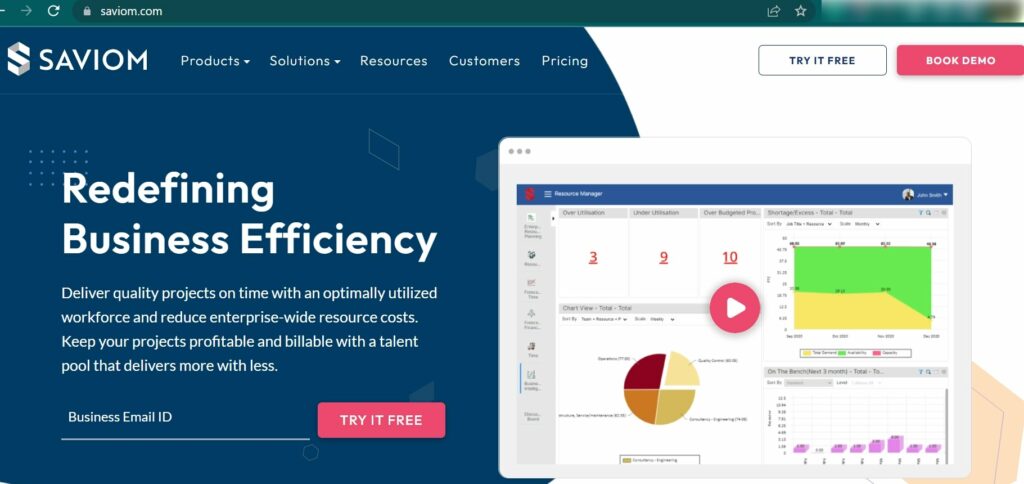
Saviom is a workforce and resource management software system that’s designed to help businesses reach higher productivity levels through advanced planning of your human resources.
Key features
- Enable agile resource allocation planning using a drag-and-drop Gantt chart.
- Build strategies to bridge the capacity gap by adjusting project schedules, retaining employees, etc.
- Receive foresight into project financials to increase your profit revenue.
- Simplify resource utilization by identifying the gap between forecasted and actual utilization.
Pricing
Available upon request.
Customer ratings
- G2: NA
- Capterra: 4.3/5 (10+ reviews)
10. Wrike
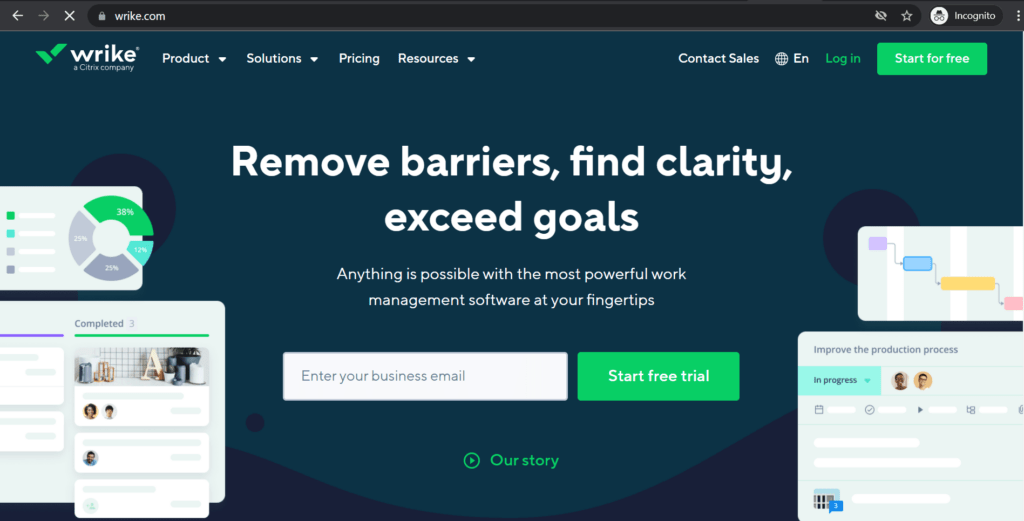
Wrike is a project management system that aims to remove unnecessary complexity from work and allow teams to grow to their full potential.
Key features
- Eliminate silos by gaining 360-degree visibility into your capacity planning process.
- Scale the capacity management software as your company grows.
- Customize workflows, dashboards, request forms, and much more.
- Track time manually or use the automatic time clock to focus on billable hours.
Pricing
Wrike offers a free plan for up to five users.
Larger teams can first try out all the features with a free 14-day trial and then go for a paid plan starting at $9.80/user per month.
Customer ratings
- G2: 4.2/5 (2,400+ reviews)
- Capterra: 4.2/5 (1,700+ reviews)
Let’s look at some features that your chosen team capacity and project planning tool should have.
How to choose a capacity management software solution?
Your chosen team capacity planning software should ideally have the following features:
1. Time and attendance reporting
Without time and attendance reporting functions, you’ll not know:
- How much time each project takes to complete.
- Which team members are the most productive.
- How the workload is divided across team members.
You’ll also understand which team members are present at work and have the available resources to take up an urgent task.
2. Real-time productivity analytics
Through real-time productivity reports, you can understand where you have adequate capacity on your team and where you don’t. This allows you to make informed decisions regarding which team members can handle additional tasks at any given time.
You can usually customize such reports so you can receive insights on specific metrics that make the planning process easier.
3. Multiple software integrations
In today’s world, it’s rare to have team members use only one site or app for all their work.
For example, remote teams may use Slack and Zoom for communication, Google Drive and Docs to collaborate, and many other tools.
Your software solution needs to either integrate with the apps your team uses for work purposes or provide a browser extension to track progress across tasks and projects.
Wrapping up
The right capacity planning software can help you manage your resources and create a capacity plan for high-demand periods.
Your ideal software should help you see how your workforce is organized, which team members have the capacity to take on more tasks, and which ones might be at risk of being overburdened.
For this, we recommend going with Time Doctor as it provides your project manager with all these insights and more at an affordable price point.
Sign up for Time Doctor’s 14-day free trial today!


